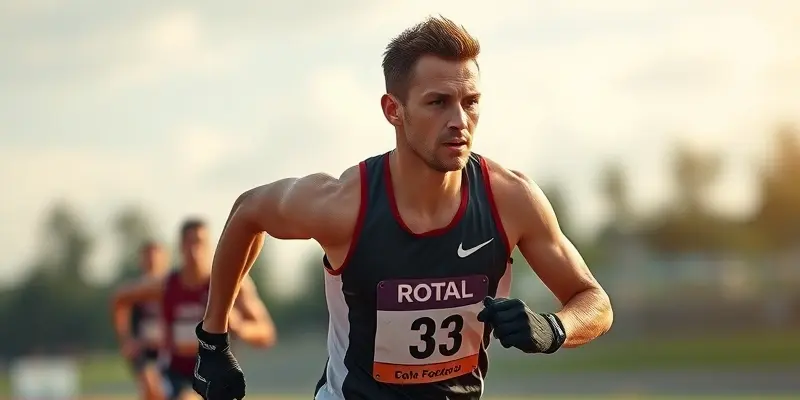Unlocking Faster Recovery & Injury Prevention: The Power of Video Analysis
Looking to train harder, stay injury-free, and bounce back stronger after setbacks? Imagine if you could see exactly what puts you at risk—then fix it. That’s the promise of video analysis, a high-impact tool transforming the way athletes and fitness enthusiasts prevent injuries and speed up recovery.
Whether you’re a gym regular, a weekend warrior, or a serious competitor, let’s break down how evidence-backed video analysis can help you stay at your best.
How Video Analysis Prevents the Most Common Injuries
Wouldn’t it be great to spot problems before they turn into pain? Video analysis allows you to do just that by closely examining your movement, frame by frame.
-
Pinpointing Faulty Technique
-
For example, knee injuries like ACL tears often start with poor landing in jumps. A slowed-down video can highlight if your knees buckle inward, giving you and your coach clear correction points.
-
Shoulder troubles in sports like swimming or baseball? Video helps reveal hidden flaws in your stroke or throw you never noticed in real time.
-
Reducing Overuse and Fatigue Risks
-
Subtle changes in form as you tire (like dropping your hips on a run) are telltale signs for overuse injuries. Video lets you track these changes so you can adjust load and rest, avoiding setbacks.
-
Immediate, Actionable Feedback
-
Nothing motivates habit change like seeing yourself in action. Real-time video feedback helps cement better habits more quickly than words alone.
Supporting Faster Recovery and Safer Return to Training
A setback doesn’t have to mean sitting on the sidelines for long. Video analysis empowers smarter, more confident comebacks.
-
Tracking Healing—Step by Step
-
Comparing your movement after injury to pre-injury footage helps therapists and coaches monitor progress and detect lingering issues that need more work. This approach pairs well with an injury recovery checklist for structured rehabilitation.
-
Correcting Compensations
-
It’s common to subconsciously protect a healing joint—sometimes creating new risks. Video shines a light on these compensations, so you address them before they cause problems.
-
Objective Return-to-Play Decisions
-
Footage provides concrete data, not just how you “feel.” This objectivity is crucial for athletes eager to avoid re-injury.
Real-Life Example
A soccer player recovering from a knee sprain uses weekly video to check their landing mechanics. Over time, both the athlete and physio see improvements—making the green light to return both safer and more motivating.
Practical Guide: How to Use Video Analysis Yourself
Ready to put this powerful approach to work? Here’s a beginner-friendly roadmap:
- Film Your Moves: Ask a friend, coach, or use a smartphone on a tripod during training.
- Review the Footage: Watch in slow motion. Look for knee alignment in squats, shoulder rotation in throws, or fatigue signs during sprints.
- Apply Corrections: Try drills suggested by your coach or online resources targeting specific technical errors.
- Track Progress: Re-film sessions post-injury or after making changes to see (and celebrate) improvements.
- Share with Advisors: Use video to communicate with healthcare pros, coaches, or even friends supporting your journey.
Beyond Video: Nutrition, Tools, and Mindset for Ultimate Recovery
Nutrition Essentials
- Prioritize Protein: Eggs, chicken, lentils, and yogurt help rebuild muscles.
- Fight Inflammation: Salmon, walnuts, leafy greens, and berries accelerate healing.
- Don’t Under-Eat: Adequate calories prevent muscle loss during recovery.
Tip: Consult with a dietitian for a plan tailored to your needs.
Recovery Tools & Gadgets
- Wearables: Track motion and workload to prevent overtraining.
- User-Friendly Apps: Many free or low-cost video analysis apps help break down movement, even for beginners.
- AI Assistance: Some apps now automatically spot form errors—like a coach in your pocket.
Boosting Motivation During Rehab
- Set Visual Goals: Use before/after clips to see progress in black and white.
- Leverage Team Support: Share footage for encouragement and accountability.
- Celebrate Small Wins: Each improvement is proof you’re on the right track.
Recap Table: How Video Analysis Lifts Your Performance
| Key Benefit | Why It Matters | Example Use ||————————-|————————————-|——————————-|| Detects technique issues| Prevents future injuries | Spotting knee collapse in jumps|| Monitors fatigue/workload| Stops overuse efffectively | Adjusting run drills after fatigue|| Tracks rehab progress | Confident, data-driven returns | Comparing pre/post injury
| Immediate feedback | Faster habit formation, motivation | Real-time squat corrections |
Ready to Transform Your Training?
Video analysis is a proven tool for smarter, stronger, and safer fitness journeys. As a fitness expert with over 10 years in sports wellness and performance, I’ve seen firsthand how this approach saves months of frustration—and builds more resilient athletes.
Have you tried filming your workouts, or are you curious where to start? Drop your questions below or join the GymPulse Club community for more expert tips, support, and motivation.
Let’s keep moving forward—stronger, together.

